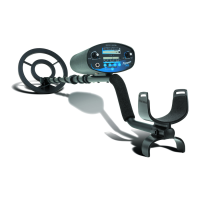
Do you have a question about the Bounty Hunter PIONEER 505 and is the answer not in the manual?
| Brand | Bounty Hunter |
|---|---|
| Model | PIONEER 505 |
| Category | Metal Detector |
| Language | English |
Defines when a metal object is "eliminated" by the detector.
Explains how the detector differentiates metal types by tone.
Describes eliminating specific items within the metallic spectrum.
Defines a relic as an object of historical interest.
Explains iron as an undesirable target, but also valuable in some contexts.
Defines ferrous metals as those made of or containing iron.
The process of accurately locating a buried object.
Describes pull-tabs as common trash items with elimination features.
Ability to ignore earth's minerals and detect metal.
Specifies that only the search coil is submersible.
The popular application of finding buried coins.
Defines a cache as a buried or hidden valuable store.
Step-by-step instructions for assembling the metal detector.
Instructions for installing and maintaining 9-volt alkaline batteries.
Lists the items required for the quick-start demonstration.
Guidelines for placing the detector correctly for the demo.
Steps to turn on the detector and set initial controls.
How to test objects by holding them over the search coil.
Steps to enter and use the discrimination mode.
Observing different tones and LCD indicators for targets.
Adjusting the Disc/Notch knob to eliminate specific items.
Demonstrating the notch feature to eliminate a specific target.
Procedure to power on the detector and its initial state.
How to operate the detector in the No-Motion All Metal mode.
How to operate the detector in the Motion All Metal mode.
Operating the detector in Discrimination mode to filter targets.
Using the Notch mode to selectively eliminate targets.
Automatic elimination of common trash items.
Overview of the No-Motion All Metal mode's features and applications.
Overview of the Motion All Metal mode's features and applications.
Overview of the Discrimination mode's features and applications.
Overview of the Notch mode's features and applications.
Overview of the AutoNotch mode's features and applications.
Explains how to interpret the Liquid Crystal Display readings.
Details specific target identifications and their LCD segments.
How gold objects are represented on the LCD display.
How silver objects are represented on the LCD display.
How iron and foil objects are represented on the LCD display.
How pull tabs are represented on the LCD display.
How S-caps (bottle caps) are represented on the LCD display.
How zinc pennies are represented on the LCD display.
How dimes and older pennies are represented on the LCD display.
Explains the low battery warning indicator.
How the depth indicator shows target depth in inches.
Principle of sensitivity adjustment to reduce interference.
Steps for retuning the detector to environmental conditions.
How temperature changes affect detector performance and retuning.
Technique for pinpointing targets in No-Motion mode.
How the detection field size relates to target size and shape.
How three distinct tones classify metal objects.
Audio tones for iron and steel objects.
Audio tones for gold objects based on size.
Audio tones for pull tabs, including differentiation from gold.
Audio tones for valuable coins and objects.
Technique for pinpointing targets in Motion modes.
Proper technique for swinging the search coil.
Proper sweep technique and overlapping for thorough coverage.
Differentiating between repeatable and non-repeatable signals.
Discusses uses in tight spaces, black sand, and trashy areas.
Explains improved battery life and clearer sound detection.
Causes and solutions for erratic detector behavior.
Causes and solutions for constant tones.
Causes and solutions for incorrect or multiple target IDs.
Causes and solutions for the detector not powering on.
Description of the rugged carry bag.
Combo including a pouch and digging tool.
Lightweight, adjustable stereo headphones.
Device for pinpointing buried metal objects.
Large scoop with filtering holes for sifting sand.
Various search coils for different applications.
Protective covers for search coils.
Durable digging tool with a metal blade.
A practical, wide-bladed digging tool.
100% cotton t-shirt with the Bounty Hunter logo.
Adjustable baseball cap with the Bounty Hunter logo.
Kits containing items for gold prospecting.
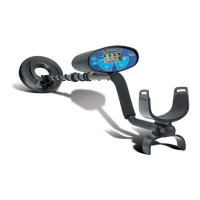

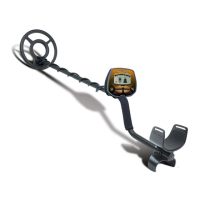
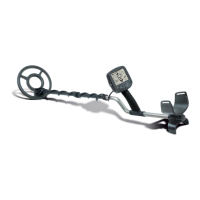


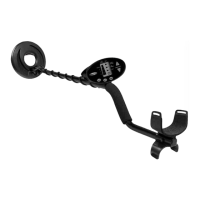
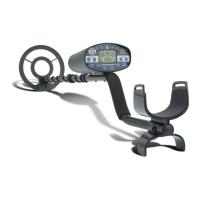
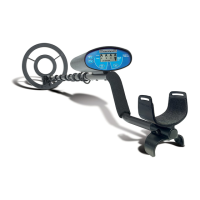
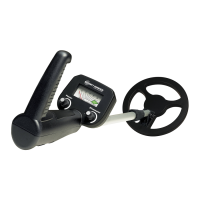
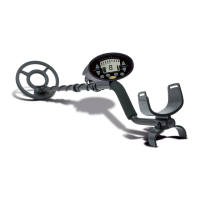
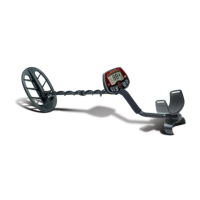
